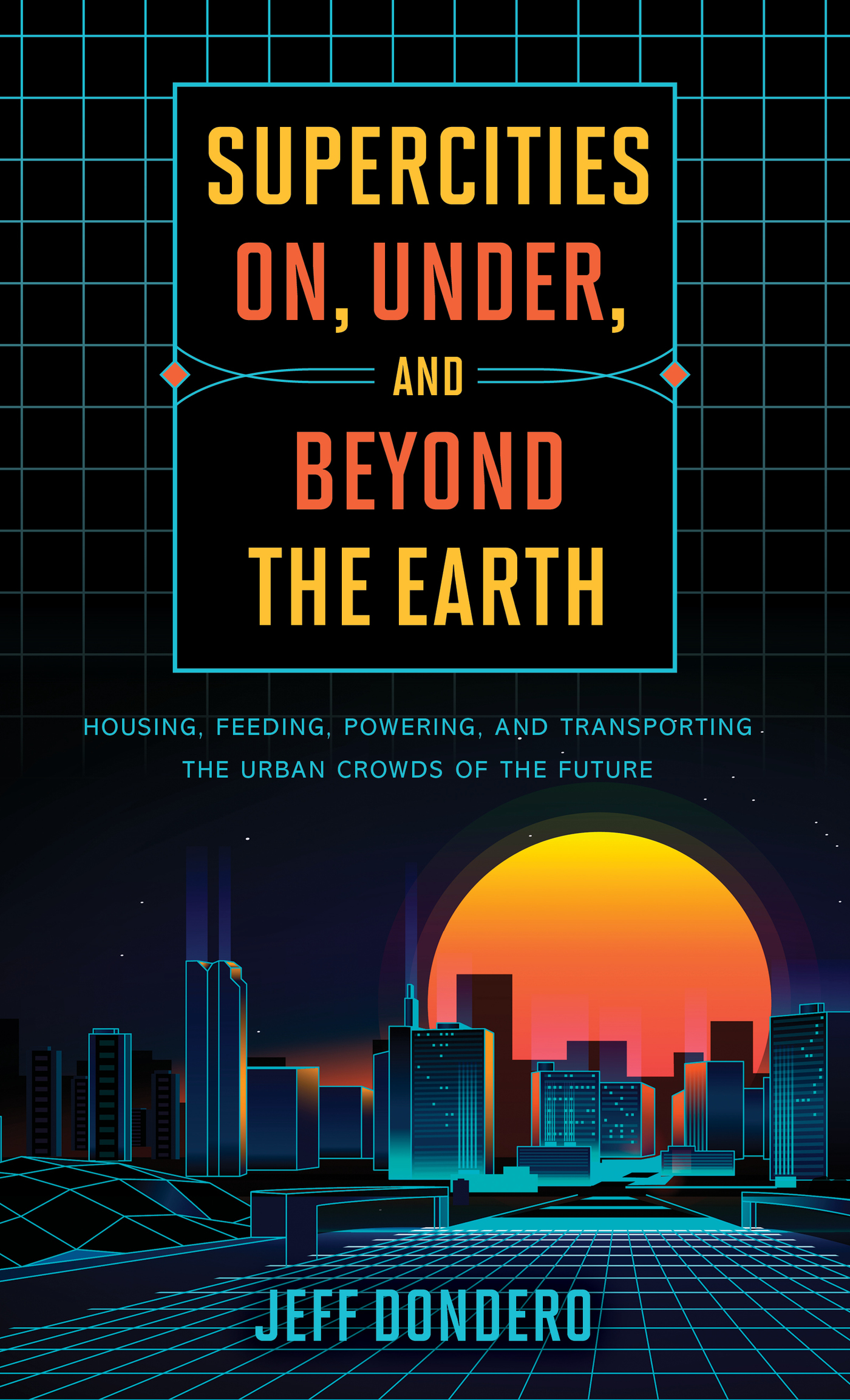Supercities On, Under, and Beyond the Earth
Supercities On, Under, and Beyond the Earth
Housing, Feeding, Powering, and
Transporting the Urban Crowds
of the Future
Jeff Dondero
ROWMAN & LITTLEFIELD
Lanham Boulder New York London
Published by Rowman & Littlefield
An imprint of The Rowman & Littlefield Publishing Group, Inc.
4501 Forbes Boulevard, Suite 200, Lanham, Maryland 20706
https://rowman.com
6 Tinworth Street, London SE11 5AL, United Kingdom
Copyright 2020 by The Rowman & Littlefield Publishing Group, Inc.
All rights reserved. No part of this book may be reproduced in any form or by any electronic or mechanical means, including information storage and retrieval systems, without written permission from the publisher, except by a reviewer who may quote passages in a review.
British Library Cataloguing in Publication Information Available
Library of Congress Cataloging-in-Publication Data
Names: Dondero, Jeff, 1947 author.
Title: Supercities on, under, and beyond the earth : housing, feeding, powering, and transporting the urban crowds of the future / Jeff Dondero.
Description: Lanham : Rowman & Littlefield, [2020] | Includes bibliographical references and index.
Identifiers: LCCN 2019042357 (print) | LCCN 2019042358 (ebook) | ISBN 9781538126714 (hardcover ; alk. paper) | ISBN 9781538126721 (epub)
Subjects: LCSH: Cities and townsForecasting. | Urban transportationForecasting. | Smart citiesForecasting.
Classification: LCC HT151 .D56 2020 (print) | LCC HT151 (ebook) | DDC 307.76dc23
LC record available at https://lccn.loc.gov/2019042357
LC ebook record available at https://lccn.loc.gov/2019042358
 TM The paper used in this publication meets the minimum requirements of American National Standard for Information Sciences Permanence of Paper for Printed Library Materials, ANSI/NISO Z39.48-1992.
TM The paper used in this publication meets the minimum requirements of American National Standard for Information Sciences Permanence of Paper for Printed Library Materials, ANSI/NISO Z39.48-1992.
Preface
In the early 21st century, perhaps the most important artistic genre is science fiction.... [It shapes] how people understand the most important technological, social, and economic developments of our time.
Yuval Noah Harari, 21 Lessons for the 21st Century
This fanciful and factual peek into the future of cities is as much scientific possibility as it is fiction, but the flights of the imagination herein are based on real science. Some of these castles in the sky admittedly may not come to fruition, at least not in the next several decades, but most will be at least in the planning stage by the time were securely on the moon or Mars. They are based on the projections and perceptions of some very sage and sapient minds.
As far as colonizing other vistas is concerned, I think humankind has proven beyond a shadow of a doubt that any challenge that lies over the next horizon, whether it is on, under, over, or above the earth, will not be left unmet. And heading for the stars may be the biggest hurdle humans have faced since they dropped down out of the trees.
This book may read like a combination of sci-fi tech-talk. In a way I guess that makes me a futurist. But this book is meant to provide a glance into the next generations of food, building materials, structures, modes of transport, and possible lifestyles. It is also a wake-up call to stop and think before we get swept up in the seductive vortex of technology, and to reflect on the fact that the future does not just happen; it is created by us, and we will be held responsible for the decisions today we make for tomorrow. We are now taking steps not by mathematical projection (one plus one) but in a logarithmic manner (ten times ten), and these are the biggest techno-strides we will have taken in humankinds history.
One thing is for certain: there is a groundswell of people thronging back into our cities, and our metro spaces are not prepared for it. What we find in cities today are exorbitantly expensive houses, buck-busting rents, deteriorating inner-city transportation, embarrassing homeless situations, inadequate treatment of waste and pollution, and the need for improvements everywhere from roads to resources. Our cities are dealing with the chasm of difference among the socioeconomic classes in terms of distribution of the necessities of life; restrictive rules, codes, and regulations in building; bureaucratic bungling; and poor planning.
There have got to be some changes madeand not old, pass Band-Aid fixes but far-reaching, novel ways that not only combat our current problems but also provide sustainable innovations that will work for the ages, not just for a few years.
We are living in a cross between yesterdays science fiction and soon-to-be scientific fact; for what is fantasy today may well be reality tomorrow. It will be run by technology, which, like a force of nature, nothing can stop and which we have only just begun to understand and respond to. In the future our smart houses and household robots loaded with artificial intelligence may be running us instead of the other way around. We are at the gateway to new and incredible products, materials, and technology, but how are we going to go about managing or manipulating them for our benefit?
The present mindset of our culture is often driven by incompetent politicians, scarcity-oriented economics, and a system of pass values that have to be reevaluated in the face of major disruptive changes. In order for us to be able to make the transition to this new age, quantum leaps in both thought and action are required. Experience tells us that human behavior can be modified toward and through constructive or destructive activities.
It looks like we take the best and worst of us wherever we go; despite our raised consciousness about husbanding resources, protecting the planet and its contents, we also are littering our nearest alien celestial bodies, forming a nascent space force despite a treaty that promises we will not do so, and creating an atmosphere of flag planting and raw materials hunting. It has been the hallmark history of humankind to put profit and possessions before people and our planet.
It seems that too often we forgo real personal contact with other people, friends and family alike, in favor of time spent with our electronic gadgets. I have a friend who has a cabin in the woods that has no connection to anything modern and electronicno TV, cell reception, Wi-Fi, or internet server. Consequently, people in the cabin actually engage in conversation, take walks, and do things togetherwhile looking straight ahead or at each other, not downward into devices.
One thing that we should not ignore, going forward, is inner-city interaction with greenit may be the most important color in the city. Many studies have concluded that plants, parks, and quiet natural areas are absolutely essential for relaxation, critical thinking, and physical as well as mental well-being.
One of the ways technology has bloomed is with building materials and methods. Their many forms and uses are nothing short of spectacular. Even old foes like carbon dioxide are going to be either cut back, sequestered, removed, or made into building materials, and recycling and landfill mining will be major megaindustries.
Boomers growing up thought the ultimate technology was the A-bomb and that it was going to bring about our apocalypse. Now technology will be one of our saviors. We now look at science as on the cusp of being divinesome even ask the question of whether God is technology or technology God.
Next page
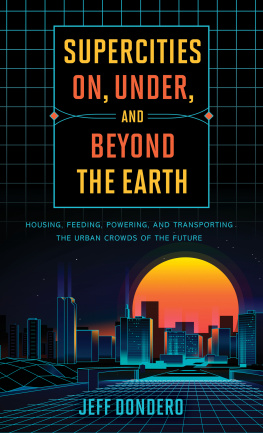
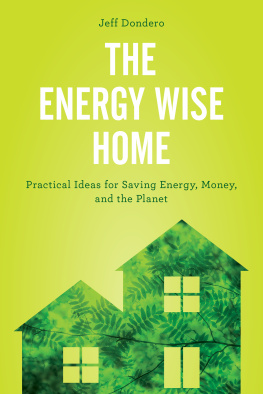
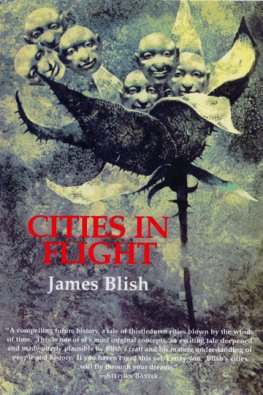

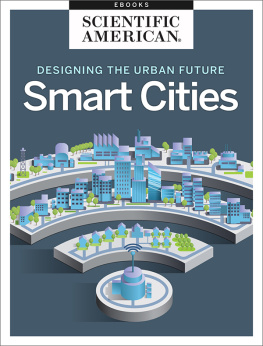
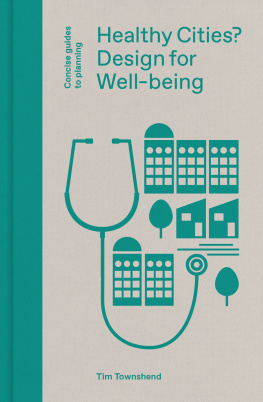
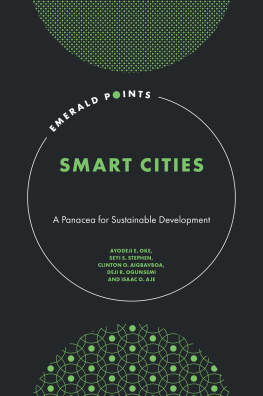
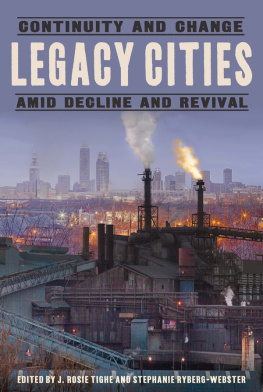

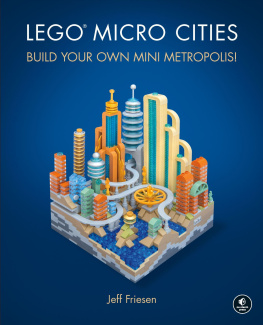
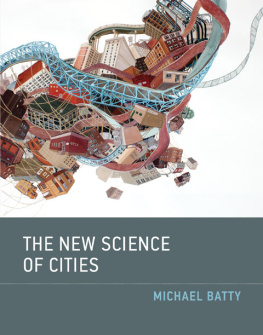
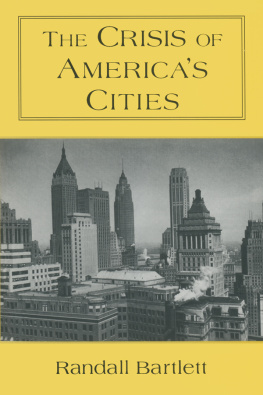
 TM The paper used in this publication meets the minimum requirements of American National Standard for Information Sciences Permanence of Paper for Printed Library Materials, ANSI/NISO Z39.48-1992.
TM The paper used in this publication meets the minimum requirements of American National Standard for Information Sciences Permanence of Paper for Printed Library Materials, ANSI/NISO Z39.48-1992.